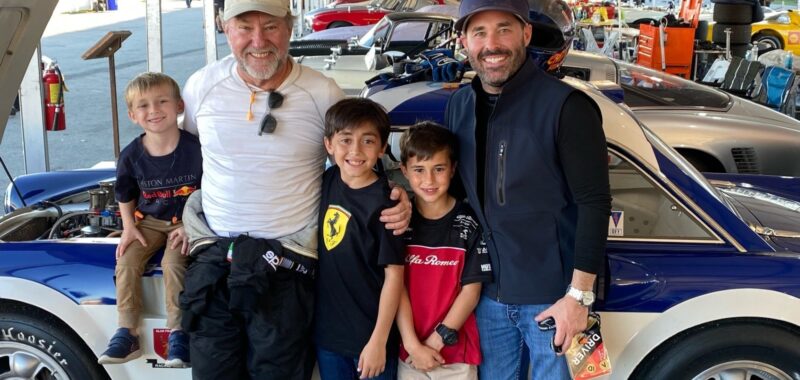In the late 1980s, Chip Fudge came to a realization that changed the course of his business. He was running the collection agency his parents started 20 years earlier, and one of its clients, Southwestern Bell, asked the team to help with some property claims it was struggling to recover.
It was a lightbulb moment that opened his eyes to new opportunities, Chip’s son Taylor Fudge tells Entrepreneur. “My dad figured out quickly that he liked negotiating with an insurance carrier and an insurance adjuster versus somebody with a past-due telephone bill.”
That recovery work led to a pivot that eventually resulted in the debt collection agency becoming three different organizations: CMR (Claims Management Resources), AnSR (Advanced Subrogation Resources) and AMR (Account Management Resources).
Entrepreneur spoke with Taylor, managing partner of all three companies, to learn how he and the leadership team continue to innovate and grow their businesses while preserving the legacy of his grandparents’ business.
Entrepreneur: There are new ideas and opportunities every day. How do you decide which are worth your time and resources?
Taylor Fudge: That’s something we constantly face. Not all opportunities are good opportunities. I often think of an image that I’ve seen of a German Shepherd jumping over a cliff to bite a duck. Yep, he might get the duck, but it doesn’t lead to anything on the back end other than bad news. So, we focus on our strengths and our core competency. We do what we can be great at versus trying to be a jack of all trades. If you jump into too many industries, eventually, you’ll find that you’re a master of none. But if we see an opportunity related to our core business, we go after it with a sense of urgency and consistency. We put our noses down until we hit the goal.
Related: This 21-Year-Old Was In College and Didn’t Know What He Wanted to Do With His Life. A Year Later, He Thought of an Idea That Turned Into a $16 Million Business.
How do you extend company culture across three entities?
We’re a Lean Six Sigma shop, which binds the three organizations together. LSS is a methodology for improving processes. We just sent 15 managers through a five-month training course. For all of our companies, we’ve got to produce better results for our customers than they could get somewhere else. Some of our clients operate in incredibly difficult spaces — nobody likes to be called about a past-due invoice, right? So we invest in our people and send them to negotiation classes to help them succeed.
What are some things you’ve learned about negotiating and getting results?
This will sound a little funny since we’re mostly talking to people on the phone all day long, but body language matters. When you are sitting up, that attentive alertness comes through in your voice, as opposed to being slumped down in your chair.
Another thing we talk about is consistency and how it can actually be a negative thing. For example, you’re having a problem connecting with someone. And so you follow up by calling them every Monday at 10 a.m. Well, it may be that the person you’re trying to reach is busy doing something every Monday at 10 a.m. So you’ve got to use your critical thinking skills. Tweak your approach a little bit. That’s why we give our people a process we want them to follow but also some leeway and freedom to modify that process to make it work for them and make it work for our customers, too.
Related: Cultivating Innovation and Risk-Taking in Your Business
What is your approach to problem-solving?
We attack everything like it’s a process. It’s not about attacking the people, it’s not attacking the challenge or the situation. You attack the process. We’re data junkies. We document every one of our processes. We visually determine where bottlenecks, problems and challenges crop up most often. And then from there, we can attack whatever real issue is going on versus hoping that we’re on the correct path.
This business has been in your family for generations. How have you managed that family-work balance?
That legacy piece is probably the part that weighs most heavily on me. My grandparents were successful. My dad has been successful in this space, and I want to continue that legacy. Now, I’ve actually never reported directly to my dad, and that has probably been extremely beneficial for us, especially earlier on in my career. And at this point, we’ve got a pretty good handle on our individual roles. Effectively, he’s retired. He is the visionary and the money guy. A couple of our other partners and I are handling the day-to-day operations. My role really is focused on all things outside and client-facing. I tell everyone that my job is to make sure that our relationships with customers are happy, healthy and profitable. But truly, it’s a team effort. I couldn’t do the things that I do without having confidence in my internal team that we are going to kill it on the backend and overdeliver for our clients.
Your dad is famous for his love of racing vintage cars, as are you. Any skills that transfer from running a race track to running a business?
Operating under high stress at high speeds, and sometimes the brakes aren’t so great, so it is hard to slow down! [Laughs] Both are extremely stressful and extremely fun. High risk, high reward is certainly a motto that fits for both. And, of course, focus. You need to stay focused during a race, and when meeting with customers, you want to bring that extra level of focus and dedication to ensure that you’re executing the way you want to execute.
Related: He Raced at 330 MPH Before Taking Over the Family Business — Here’s What Being in the Driver’s Seat Taught Him About Leadership

